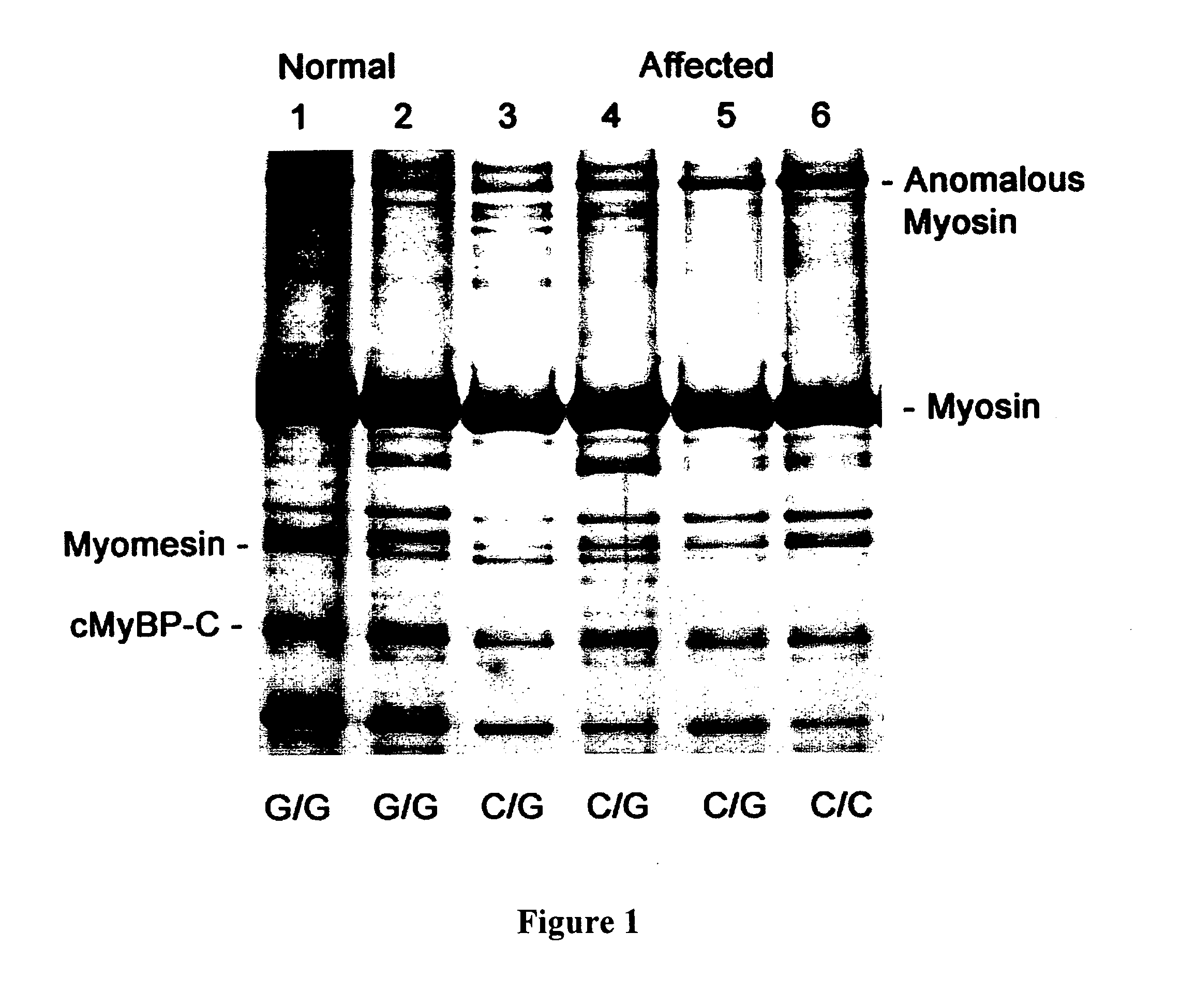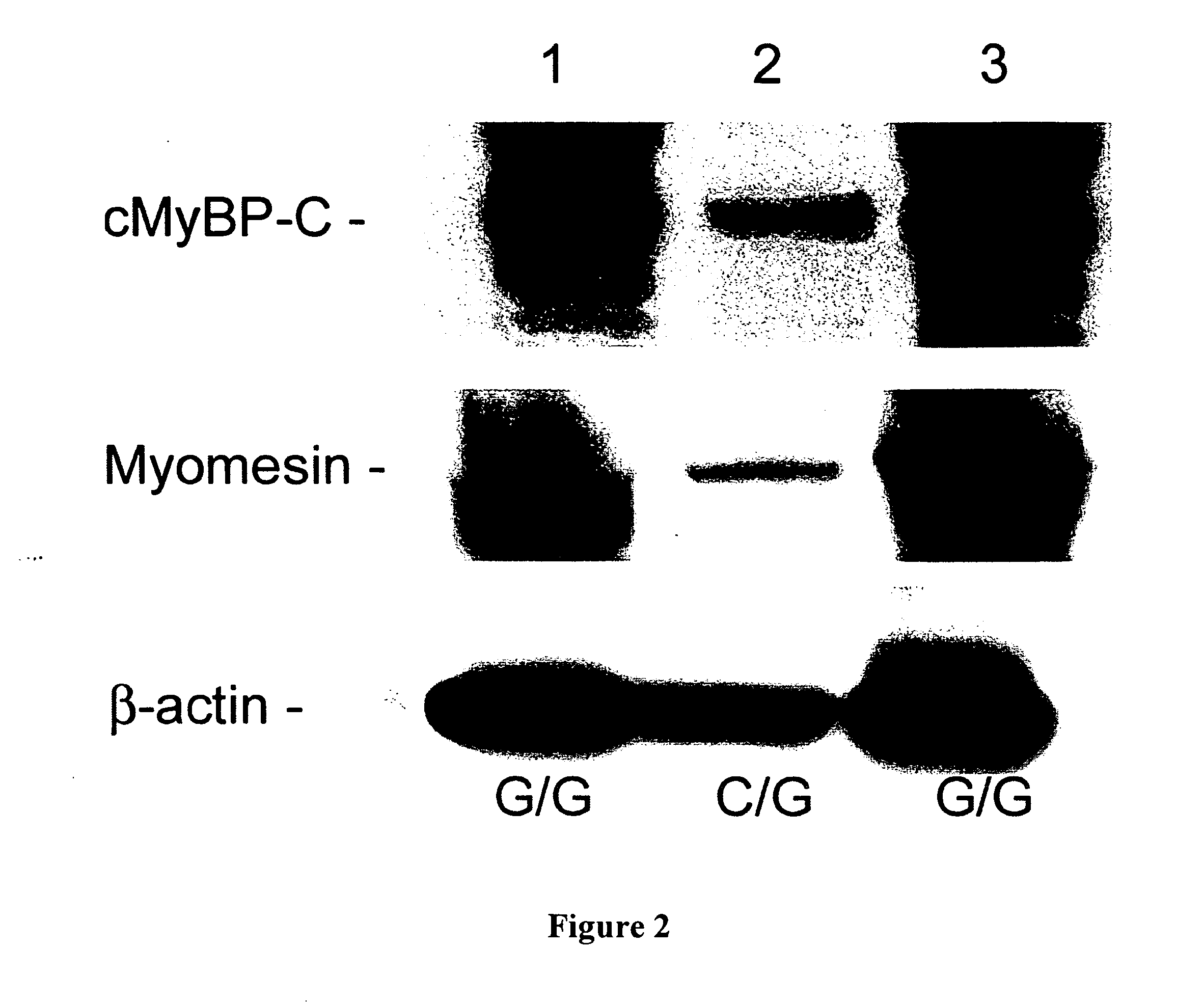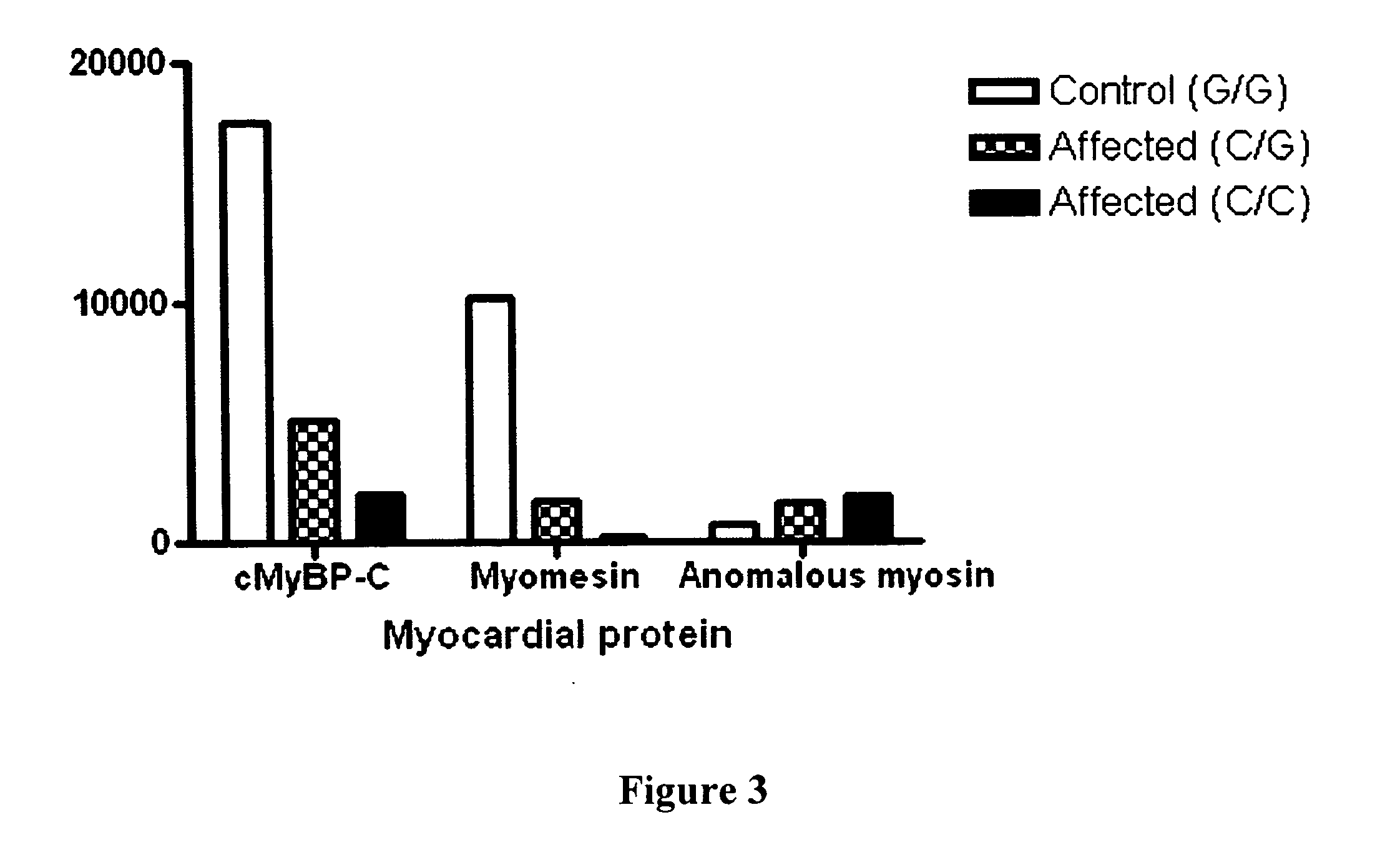Detecting mutations in the feline cardiac myosin binding protein C gene associated with hypertrophic cardiomyopathy in cats
a technology of feline cardiac myosin and cat, which is applied in the field of detecting mutations in the feline cardiac myosin binding protein c gene associated with hypertrophic cardiomyopathy in cats, can solve the problems of sudden death, systemic thromboembolism in domestic, and heart failure, and achieve the effect of improving overall prognosis and reducing disease propagation through family lines
- Summary
- Abstract
- Description
- Claims
- Application Information
AI Technical Summary
Benefits of technology
Problems solved by technology
Method used
Image
Examples
examples
[0045] Clinical Description
[0046] The pedigree of the cats in the colony studied have been published previously. We evaluated twenty three related Maine Coon cats from this colony and 50 unaffected mixed breed control cats. Disease status was identified through repeated echocardiographic examinations. The median left ventricular (LV) wall thickness and interventricular wall thickness was 7 mm (range: 6-9 mm; normal=3 to 5 mm) in affected (n=16) cats.
[0047] Identification Of A MYBPC Mutation
[0048] DNA was extracted from peripheral lymphocytes isolated from each of the cats and the 38 coding exons of the MYBPC gene were amplified, using oligonucleotides designed to the published human gene sequence. DNA sequencing revealed a single base pair change (G to C) in codon 31 (G-C66) in affected cats. (see FIG. 4). This changes a conserved alanine (ALA) to proline (PRO) (A31P) in each of the Maine Coon cats with HCM but none of the unaffected Maine Coon or control cats. Affected cats were...
PUM
| Property | Measurement | Unit |
|---|---|---|
| Length | aaaaa | aaaaa |
Abstract
Description
Claims
Application Information
 Login to View More
Login to View More - R&D Engineer
- R&D Manager
- IP Professional
- Industry Leading Data Capabilities
- Powerful AI technology
- Patent DNA Extraction
Browse by: Latest US Patents, China's latest patents, Technical Efficacy Thesaurus, Application Domain, Technology Topic, Popular Technical Reports.
© 2024 PatSnap. All rights reserved.Legal|Privacy policy|Modern Slavery Act Transparency Statement|Sitemap|About US| Contact US: help@patsnap.com










